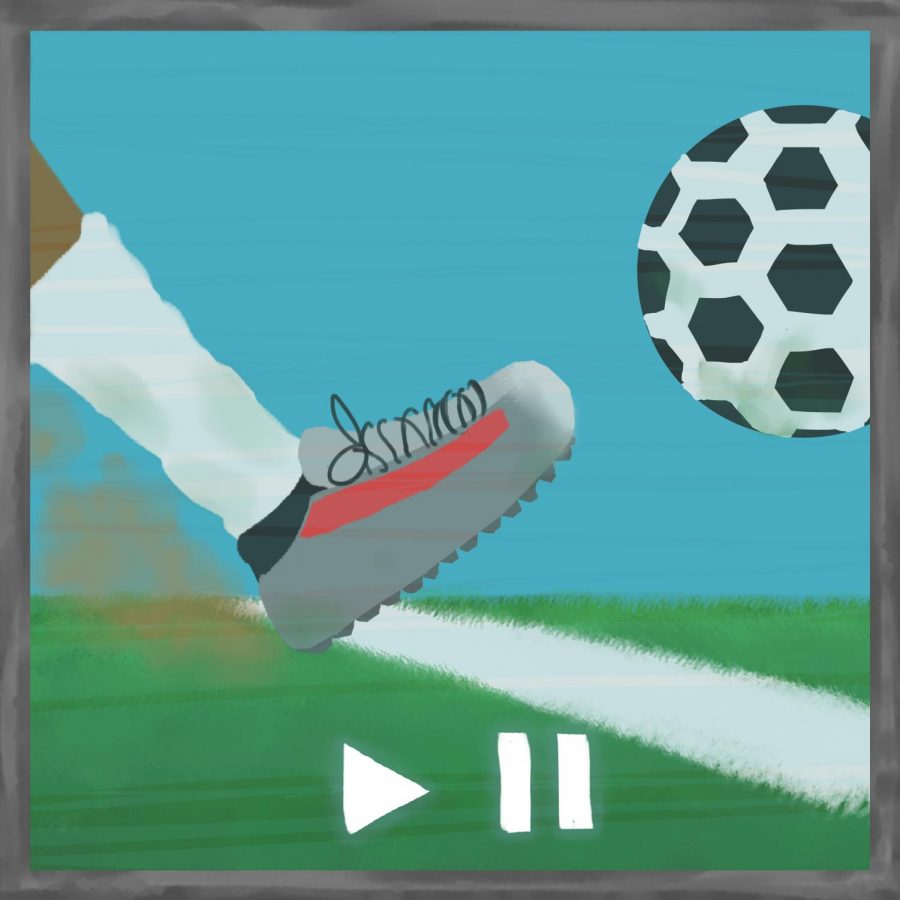Video Assistant Referee Is Taking Over Soccer
VAR: The latest and greatest technological advancement in sports is a heated talking point among soccer pundits. Does something like Video Assistant Referee belong in the game of soccer?
November 26, 2018
The purists and new generation of soccer fans are split on a technological advancement that is taking over the soccer world: Video Assistant Referee. This innovation has been featured in soccer games all over the world, most notably in the 2018 FIFA World Cup. The goal was to get crucial calls in a game correct, and is undeniably a step in the right direction for the sport of soccer.
First of all, it is important to understand what Video Assistant Referee, better known as VAR, is and what purpose it serves. In Major League Soccer, Video Assistant Referee is a group of people somewhere in the stadium or in a studio that has communication with the head referee of a game. When one of four situations in a game arises and the group thinks a clear and obvious error has been made, they will notify the referee and recommend them to take a look at a screen on the sidelines. After checking multiple angles and shots of the situation, the head referee always has the final say and will decide if they want to change the original call.
There are four instances that can be reviewed by Video Assistant Referee. First is goals, including whether there were any violations leading up to them. Second is whether a penalty should be awarded, which is always a crucial moment in the course of a soccer game. Third is to see if one is worthy of a red card for their misconduct. And fourth is to review if there was a mistaken identity in giving a player a card.
Those reviewable instances are all moments that can change the course of a soccer game. When a player of a team is lost via a red card, the team is at an incredible disadvantage. Goals win games, and they dramatically change the momentum in a match. This all makes the implementation of Video Assistant Referee to the game of soccer absolutely necessary.
Many soccer games are decided by one or two instances. For example, late in a 0-0 game, a player goes down in the box and the referee is not sure if the defender got a piece of the ball before tackling the attacker. The balance of the game hinges on the ref’s call, but he may not have gotten a good look of the tackle and does not know whether or not to call a penalty.
Another common instance in soccer is when a player is lying on the turf, claiming that he was hit in the face by a defender. The player obviously waited for all the referees to have their backs’ turned, and once again the referee has no idea if the player is faking it or actually got hit.
Why leave either of these situations to chance? Soccer purists may argue that having a questionable referee that does not get every call correct is just part of the game, but it is ridiculous when the fate of a game is decided by a guess. Yes, there are instances of a game that have no need to be reviewed, like who touched the ball last before the ball went out or a foul in the middle of the field. Calls like that have no lasting effect on the game, but the moments when Video Assistant Referee is utilized do.
Another moment in games that is debated and commonly called incorrectly by referees is offsides. If a player is in front of the last defender when the ball is passed to him, he is called offsides and the other team will receive a free kick. This call is completely objective: the player is either offside or onside. There is no reason that a call like this should be left to chance, when a quick review can give a definitive answer. Goals change games, so being able to review offsides would ensure that in those critical moments, the right call is made.
Despite the benefits of Video Assistant Referee, soccer purists are not keen on its implementation. One reason they do not support it is that lengthy stoppages ruin the flow of a soccer game that generally has few stoppages. According to Telegraph, in a game between Liverpool and West Bromwich Albion in the FA Cup, four minutes and 46 seconds were taken up reviewing three different calls, around five percent of a 90 minute game. Including one review that took two minutes and 23 seconds, it is fair to say the intensity of a game can be lost in that amount of time.
However, the time lost to the reviews can be made up during stoppage time at the end of halves. And yes, the interruptions are not ideal, but making the right call is far more influential in deciding who is the deserving winner of the game. They also believe that having a bad referee is something that must be dealt with, but in professional sports, where so much money is on the line, it is ridiculous to see the wrong team get an undeserving win or draw because of a shocking referee call.
Technology is advancing rapidly, so soccer should not be left behind by their tentativeness to evolve with other sports and the rest of the world. Video Assistant Referee needs to be tried and used throughout the top leagues of the soccer world.



